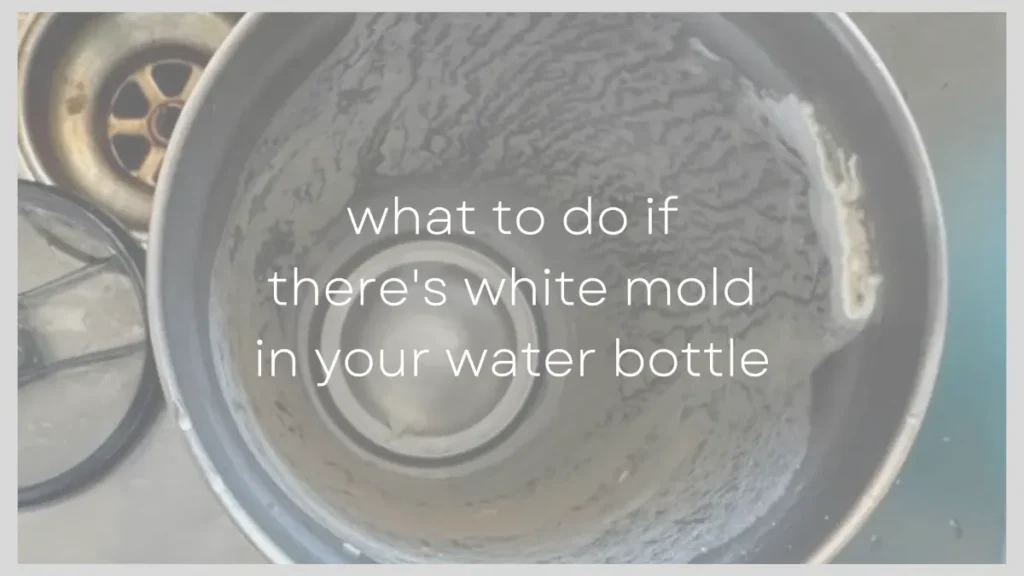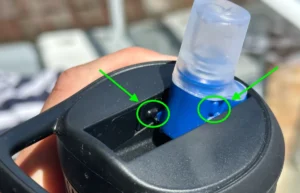If you’ve ever had mold in your water bottle, you probably noticed dark fuzzy or slimy spots, which were likely black mold.
However, you can also get white mold in water bottles. For me it happens when I drink a smoothie or protein shake from my water bottle and then proceed to leave the bottle lying around in the back of my car for 3-5 days before rediscovering it.
Lucky for me (and my water bottle) white mold isn't that bad, nor is it that difficult to get rid of.
If there’s white mold in your water bottle, don’t panic because it’s typically less harmful than black mold. It doesn’t produce mycotoxins and doesn’t penetrate surfaces. Avoid drinking from your bottle until you’ve deep cleaned it and check your lid for the more harmful black mold.
White mold grows in dark, damp conditions where vegetation or food is present.
White mold is more likely to grow in your water bottle when you drink anything other than water from it. Coffee, tea, juice, soda, smoothies and adding lemon or fruit to your water are all common things that allow white mold to grow.
Learning to recognize the differences between white and black mold will help you use the right approach when using, cleaning and disinfecting your water bottle.
What’s The Difference Between White and Black Mold?
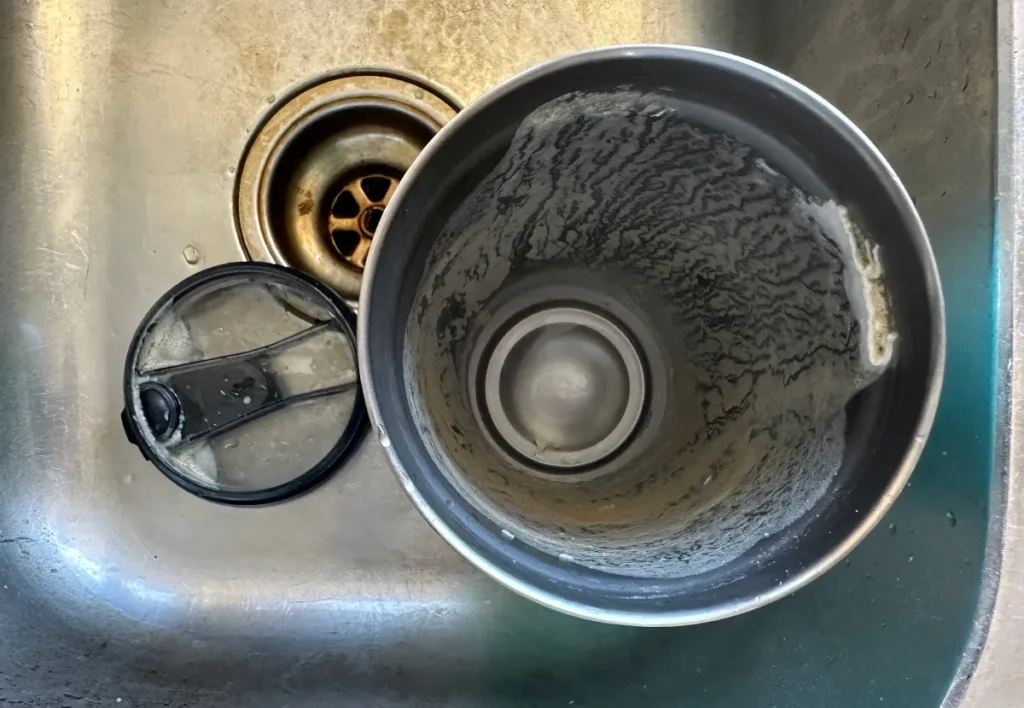
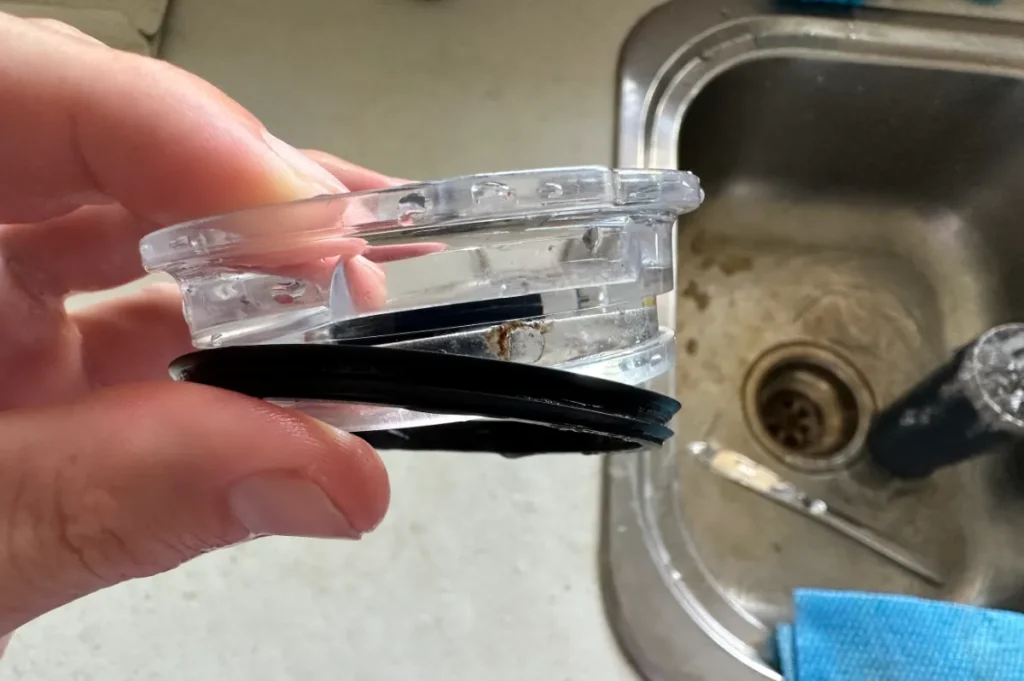
Black and white mold are both caused by a fungus and grow in dark and humid conditions.
However, they have many differences:
| White Mold | Black Mold | |
|---|---|---|
| Fungus | Sclerotinia Sclerotiorum | Stachybotrys Chartarum |
| Appearance | Delicate white or pale film.Texture is stringy, fuzzy or powdery.Flat and uniform appearance. | Irregular black, grey or green spots. Furry texture that becomes slimy as it colonizes.Inconsistent and bumpy |
| Growth Pattern | Grows on the surface only and can only penetrate organic material, such as vegetation or wood. | Grows on the surface and penetrates a wide range of materials. |
| Smell | Earthy, musty and sometimes like rotting leaves. | Earthy, musty and often smells of ammonia. |
| Elimination | Easy to wipe off and kill. | More complex elimination as it often penetrates substances. |
| Origin | Grows in dark, humid conditions and ususlly only where vegetation or food is present. | Grows in most dark and moist conditions. |
| Potential for Harm | Doesn’t produce mycotoxins, tiny mold spores that can be dangerous when inhaled or ingested. | Produces mycotoxins and can cause allergy-like, respiratory or digestive issues. |
White mold mainly attacks vegetation and food sources. If you notice white mold in your water bottle, it’s probably because it has crumbs or bits of food in it or you've done what I do and left a smoothie in your bottle for too long.
However, even if you only drink water from your bottle it can still grow white mold if not cleaned properly.
This usually happens if you drink from your bottle while eating or had it open outdoors, where tiny pieces of vegetation could enter.
Some black mold strains look white and powdery when they first develop and soon colonize into dark spots so the white biofilm you see could simply be early black mold.
My Water Bottle Has Mold and I Drank from It – What Should I Do?
If your water bottle has white mold and you drank from it, you shouldn’t use it until you’ve deep cleaned and disinfected it.
Although white mold is generally less harmful than black mold, it’s still a fungus and will develop into toxic black mold if you leave it.
Stop Using Your Bottle and Deep Clean It
If you notice white mold in your water bottle, you should stop using it immediately and clean and sanitize it thoroughly.
Below is my tried and tested method:
1. Rinse the bottle and wash it with hot water and dish soap. For severe mold, I use fresh hot water and dish soap and soak it for half an hour.
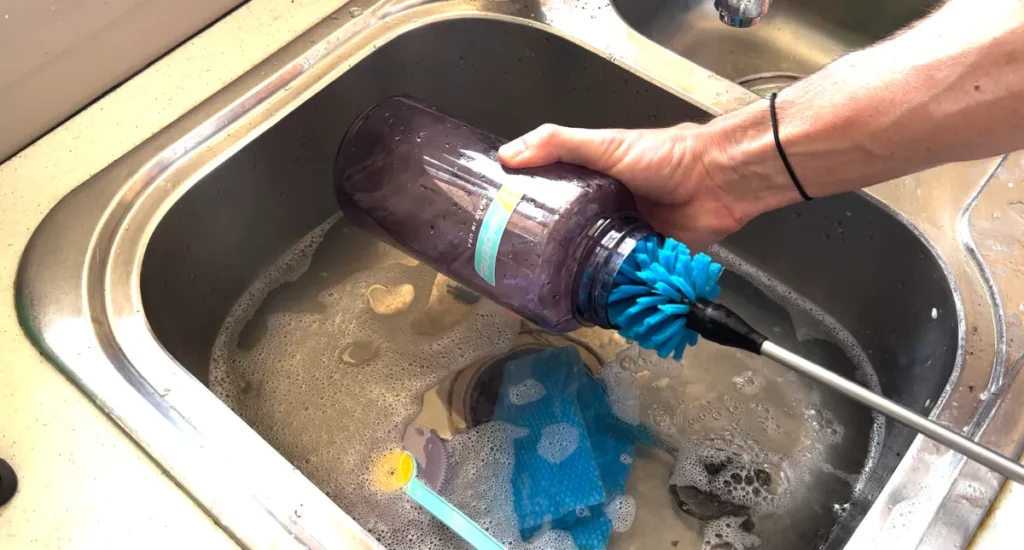
2. Repeat the above but with the bottle lid. Depending on the lid this may involve dismantling it so you can reach the hidden white mold and grime.
I wrote a guide on how to clean a push-button Thermos lid but I have others on my website as well.
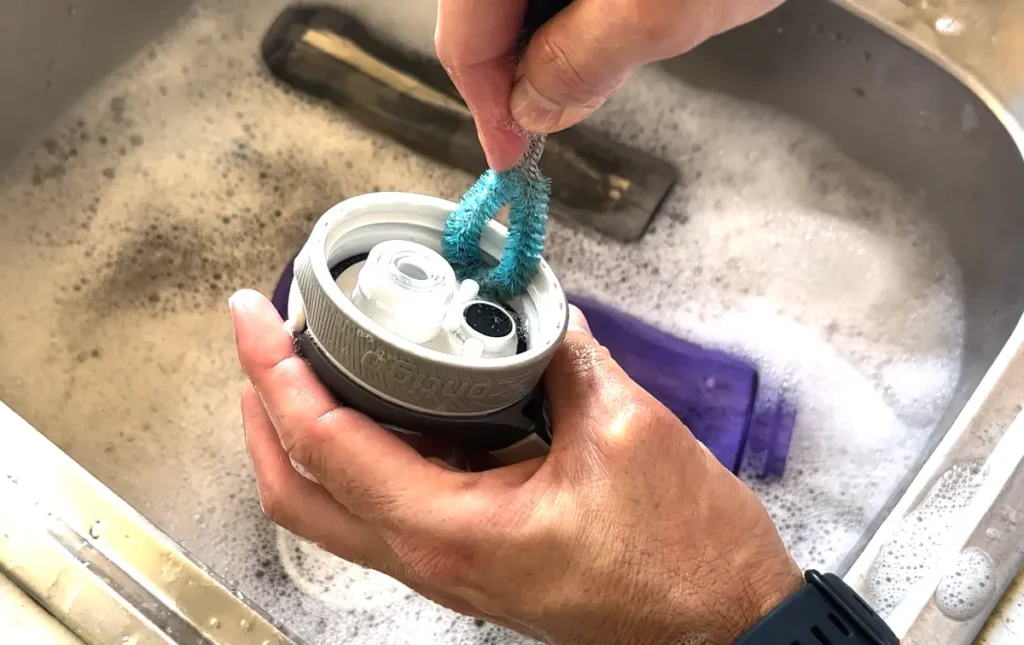
3. Soak the bottle and lid parts in white vinegar. This is my favorite bottle sanitation method because it’s effective yet gentle. I get mine in bulk from Amazon because I also use it to deodorize my refrigerator.
Vinegar is a natural mold killer and works great for water bottles as it doesn't harm the plastic like bleach can.
4. Let the bottle and lid parts air dry completely in a dry place for at least 24 hours.
How To Prevent White Mold in Water Bottles
After going to the effort of eliminating white mold from your water bottle, it’s a good idea to prevent it from happening again in the first place.
Here are my top mold prevention tips:
- Wash your bottle daily. I know this sounds like a tall order but it can prevent mold from setting in. On the days I feel lazy, I use bottle cleaning tablets that I get from Amazon (you just drop it into the bottle with some water).
All natural, safe, free of odor and harmful ingredients. This is perfect for cleaning tumblers and water bottles giving them a fresh look and smell. No scrubbing required. Made in the USA
- Deep clean your bottle monthly. This will get to the out of reach places that a normal clean won’t and will kill any white mold in its tracks.
- Empty your water bottle and store it without the lid. When you come home after a long day hiking or working, empty your water bottle, clean it and let it air dry without the lid. If you won’t use the bottle for a while, store it without the lid to allow air in and keep it dry.
- Don’t drink from your bottle while chewing and keep the lid on when you’re outside because white mold feeds on food and vegetation particles.

